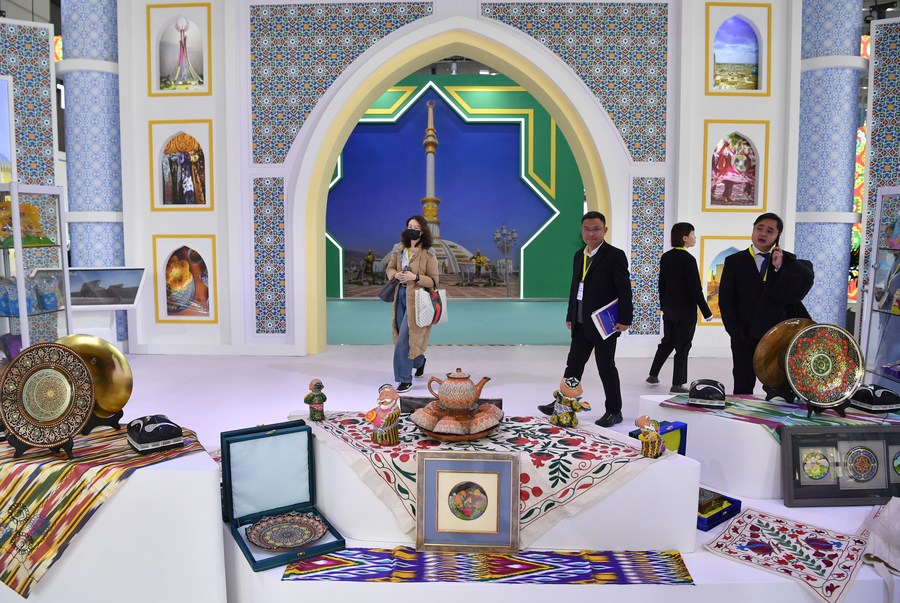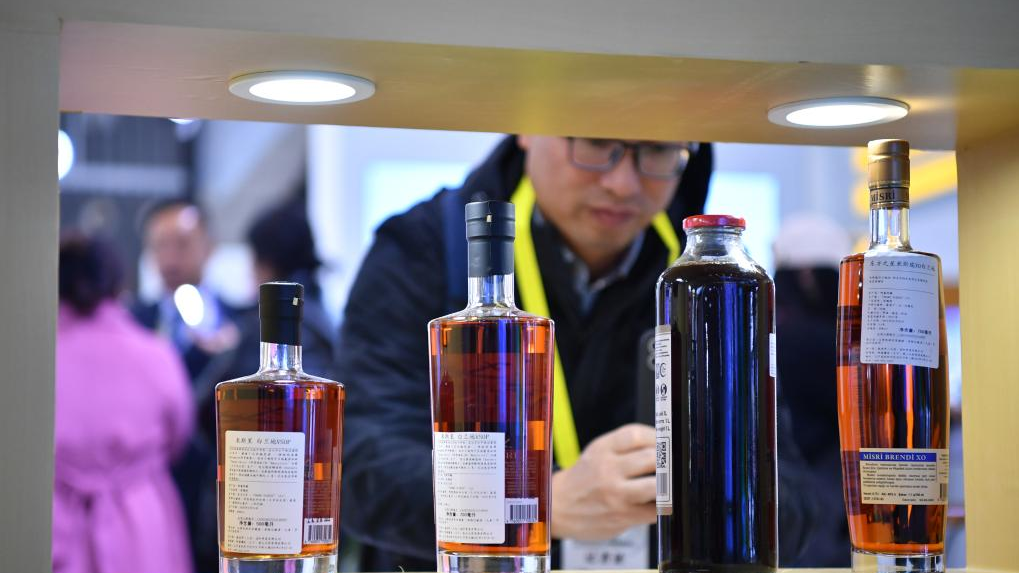BRI benefits partner nations with vast opportunities

Visitors are seen at the booth of Uzbekistan during the Seventh Silk Road International Exposition in Xi’an City, northwest China’s Shaanxi Province, November 16, 2023. /Xinhua
Visitors are seen at the booth of Uzbekistan during the Seventh Silk Road International Exposition in Xi’an City, northwest China’s Shaanxi Province, November 16, 2023. /Xinhua
Pomegranate, introduced to China over 2,000 years ago from Central Asia, has become a symbol of free trade propelled by the Silk Road.
Now a sought-after fruit in Xi’an, the capital of northwest China’s Shaanxi Province, pomegranate-made products from Azerbaijan, one of the fruit’s main producers, drew attention at the 7th Silk Road International Exposition, which ended on Monday.
Pomegranate juice and wine from Azerbaijan were brought to the expo for the first time this year, which kicked off on November 16 in Xi’an and attracted guests from over 50 countries and regions.
“We hope to take the expo as an opportunity to establish long-term partnerships with Chinese distributors,” said Teymur Nadiroghlu, trade representative at the Embassy of the Republic of Azerbaijan in China.
Stressing the long-established collaboration between the two countries in construction, energy, logistics, and tourism, Nadiroghlu mentioned the huge potential for sales growth of Azerbaijani food and beverage products in the Chinese market.
The previous six editions of the Silk Road International Exposition had welcomed more than 10,000 overseas exhibitors from over 190 countries and regions, with the total value of contracts signed for foreign investment projects exceeding $45.3 billion.
China has signed more than 200 documents with 152 countries and 32 international organizations on cooperation under the Belt and Road Initiative (BRI), covering 83 percent of the countries with which China has established diplomatic relations.
The expo’s role as a platform for BRI partner countries to tap into the huge, ever-expanding Chinese market is becoming more prominent.

A visitor views products at the booth of Azerbaijan during the Seventh Silk Road International Exposition in Xi’an, capital of northwest China’s Shaanxi Province, November 16, 2023.
A visitor views products at the booth of Azerbaijan during the Seventh Silk Road International Exposition in Xi’an, capital of northwest China’s Shaanxi Province, November 16, 2023.
During a roundtable discussion at the expo, Mirzahmedov Bobirjon Batirovich, president of the Uzbek-Chinese Association for the Development of Foreign Trade and Investment, noted that although Uzbekistan is located in the hinterland of Eurasia, trade volume between Uzbekistan and China exceeded $9 billion in 2022, thanks to the BRI.
Meanwhile, during this year’s China-Central Asia Summit, the construction of a wharf project in Kazakhstan was officially launched, following an agreement between the Xi’an International Trade and Logistics Park and Kazakhstan’s national railways group.
Not long ago, the two sides jointly witnessed the inauguration of a logistics terminal project in Almaty, expected to further enhance the operational capacity of China-Europe freight trains.
“The practice of jointly building the BRI shows that by connecting the Eurasian continent with land and sea routes, the landlocked area is no longer an economic lowland, but at the forefront of driving development,” noted Wang Fan, president of the Foreign Affairs University.
Taking the northwestern Chinese province of Shaanxi as an example, the BRI is transforming its geographical disadvantages into assets, making it an active player in the nation’s opening-up drive.
Mao Xuzhi, vice president of Hitachi Energy China, stated that market opportunities delivered by the BRI and global energy transformation have resulted in Hitachi Energy’s production plant in Xi’an developing into the world’s largest power capacitor manufacturing base. Its products are now exported to Europe, the United States, Oceania, and Africa, further increasing the company’s confidence in the Chinese market.
Davit Mkhitaryan, vice president of the Armenian Chinese Partnership Center, mentioned that the center has signed memorandums of understanding on strategic cooperation with 57 Chinese government agencies, economic and trade associations, and organizations, with 28 cooperation projects already in process.
“Since participating in the BRI, the trade volume between Armenia and China has shown almost three-fold growth. China is our second-largest trading partner. We are very optimistic about the Chinese market and its development potential,” Mkhitaryan said.
(With input from agencies)

